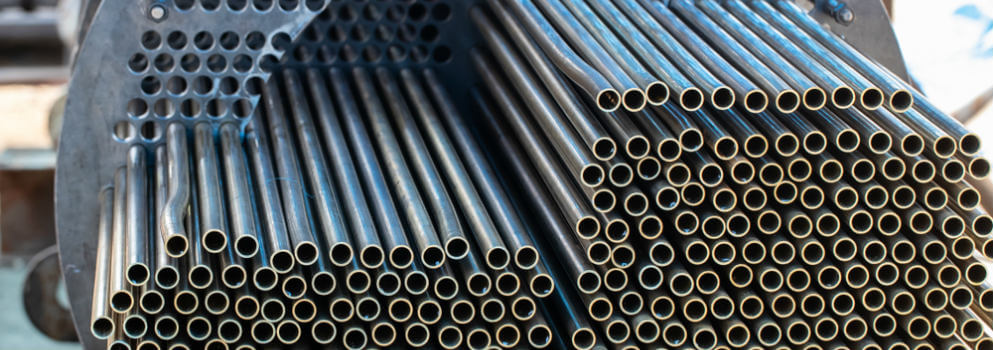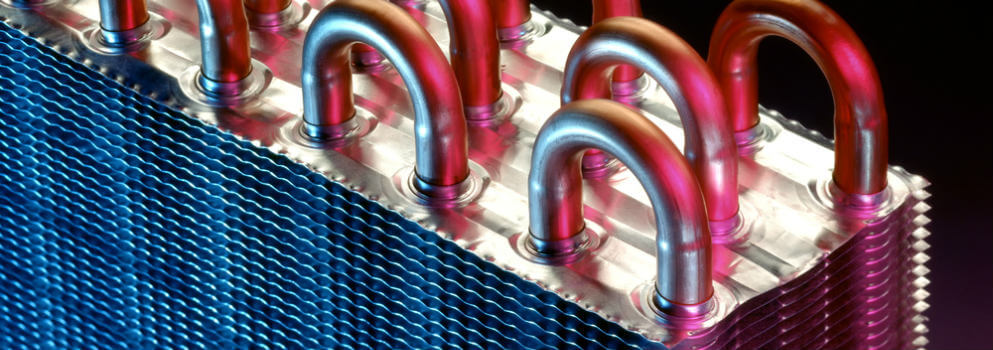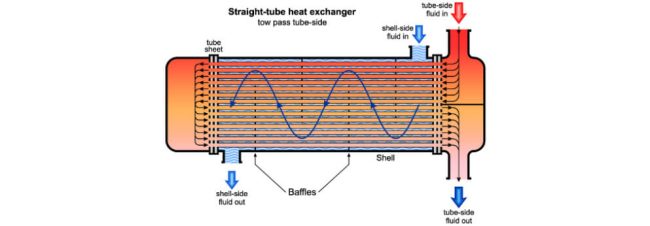
HEAT EXCHANGER VS. CHILLER – WHICH IS MORE SUITABLE FOR YOUR NEEDS?

Different cooling equipment can be used to achieve optimal process or ambient temperatures in commercial and industrial settings. The popular and readily available variants are chiller cooling systems (air-cooled chillers or water-cooled chillers) and heat exchangers.
Although most heat regulation systems work using a chiller and heat exchanger combination, these cooling devices sometimes exist as stand-alone setups. This article will explain the differences between a heat exchanger and a chiller cooling system while highlighting the pros and cons of each device type.
Heat Exchanger vs. Chiller
The major difference between a heat exchanger and a chiller is in the design. While chiller systems possess refrigeration units that cool their circulating chiller fluid, a heat exchanger lacks a refrigeration unit and achieves temperature regulation by direct fluid heat transfer.
Chiller
A vast array of chillers has been developed for use in various industrial processes including metal finishing, plastics and chemical processing, beverage manufacture, pharmaceutical preparations, and medical diagnostic systems. Different versions of water/air systems are currently available including open-loop and closed-loop chiller models.
What Is a Chiller?
A chiller is a device that eliminates heat from a given process by channeling chilled water through it. The cooled water used in a chiller is generated by utilizing either an absorption and refrigeration cycle or by compressing a liquid from its vaporized form.
How Does A Chiller Work?
Understanding how a chiller works depends on its underlying cooling system.
- Vapor compression
- Heat absorption
The setup for a vapor compression chiller typically consists of a compressor unit which generates the cooling effect by converting a heated vaporized refrigerant to its cooled liquid form. Vapor-compression systems usually come installed with air-cooled, water-cooled or evaporative condensers.
Absorption chillers use are cheaper, low energy cooling units that channel a coolant through a heated process in a single-phase cooling cycle. These devices mostly consist of water-based refrigerants using lithium bromide as an absorbent.
Heat Exchanger
A broad range of heat exchangers is currently available for use in various cooling processes. Outlined below are vital key points to note for the operation and application of these heat exchange systems.

What Is a Heat Exchanger?
A heat exchanger chiller system utilizes a device that transfers heat through various fluids. Thermal exchange chillers may use coolants composed of air, or a mixture of liquids to remove heat generated by an associated heated process.
Condensers and Heat Exchangers: Are They the Same Thing?
A condenser can be considered a form of heat exchanger as it is similar to a chiller heat exchanger in function. While a heat exchanger can regulate process temperatures independently, a condenser is a component of a chiller system (water-cooled or air-cooled) which functions to remove heat generated by an industrial or commercial process.
Heat Exchangers – Principles of Operation
Heat exchangers function by transferring heat from one fluid medium (industrial process) to another medium. This cooling effect is achieved by bringing both fluids into close proximity which allows for conductive thermal activity (heat is absorbed from the heated fluid by the cooler medium). Both fluids are separated from each other by a solid barrier which prevents mixing.
Based on the direction of flow of the interacting fluids, heat exchangers can be divided into three groups:
- Parallel flow heat exchangers allow the flow of the coolant fluid in the same direction as the heated process.
- A counter-flow chiller heat exchanger’s design enables the coolant and process fluids to enter from opposite ends of the device. This is the most efficient heat exchanger design as it conducts the most heat from the process medium to the coolant per unit mass.
- Crossflow heat exchangers move the coolant and process fluids in directions perpendicular to each other.
For optimal cooling, these devices are designed to maximize the contact surface between the heated process fluids and the coolant while restricting free flow within the exchanger.

Various heat exchangers are available for use in different industrial cooling applications. The most commonly used types are listed below:
- Shell and tube heat exchange devices
- Plate heat exchangers (chilled water plate heat exchangers)
- Shell and plate heat exchangers
- Adiabatic wheel exchangers
- Plate fin heat exchangers
Where Are Heat Exchangers Used?
Heat exchangers are currently being utilized in several commercial and industrial settings. Outlined below are a few examples:
- Building/vehicle air conditioning
- Wastewater treatment plants
- Breweries and wineries
- Petrochemical production processes
- Nuclear energy generation
Contact Cold Shot for Your Chiller Needs
For more than thirty years, Cold Shot Chillers has been one of high-quality industrial chiller manufacturers in the industry. With our customer-centric approach to business, we remain dedicated to providing you with cooling options best suited to your unique industrial process chilling requirements.
